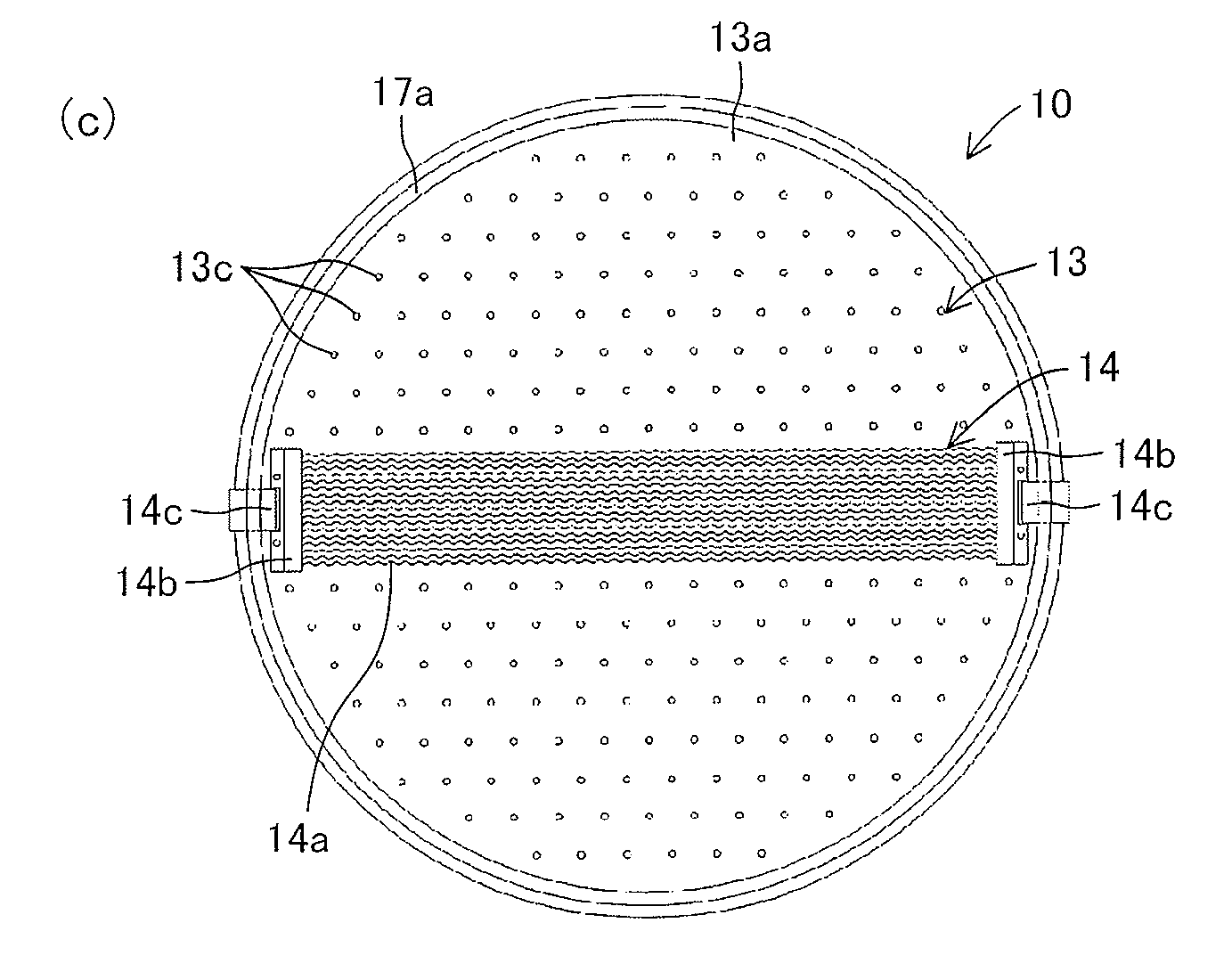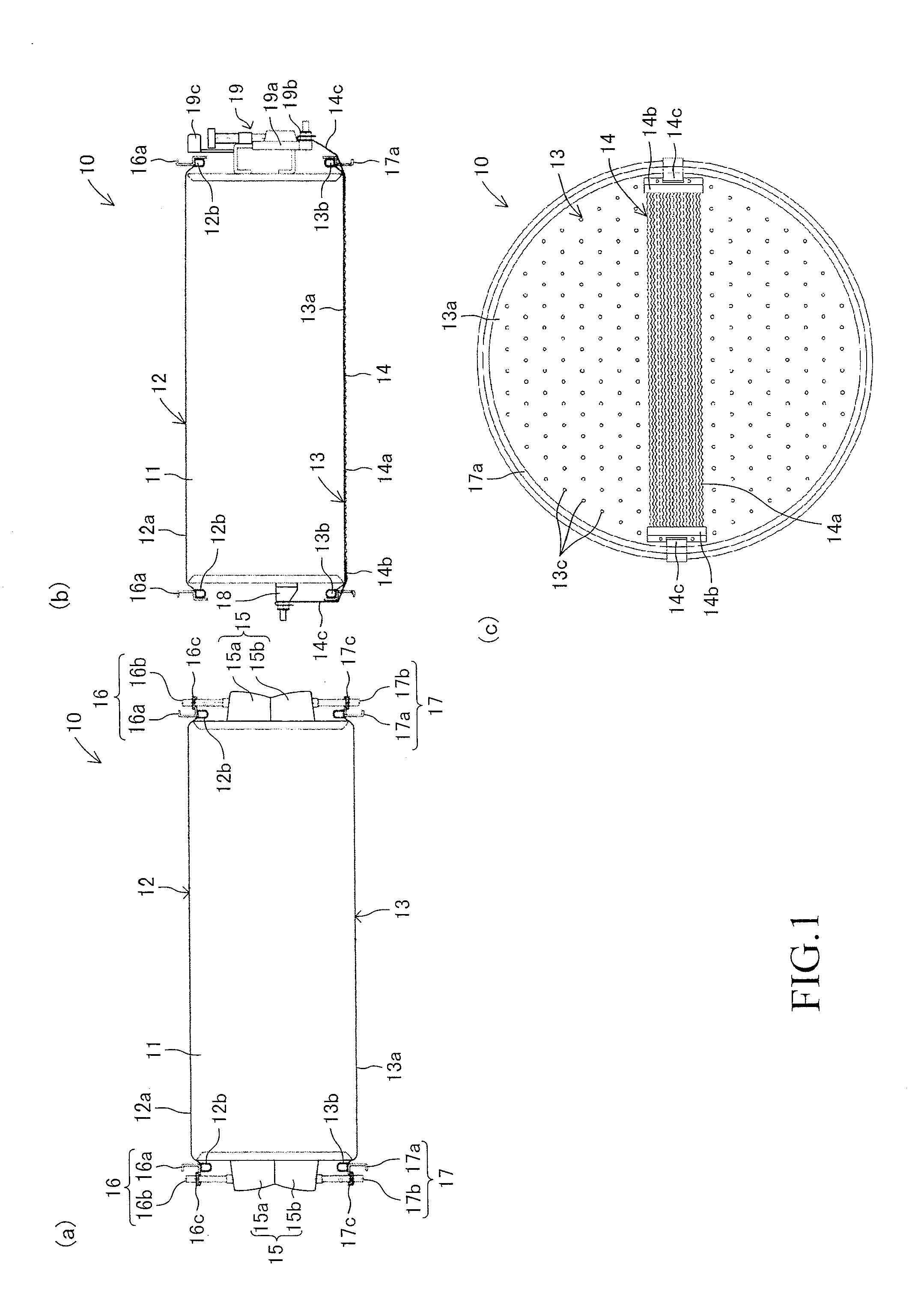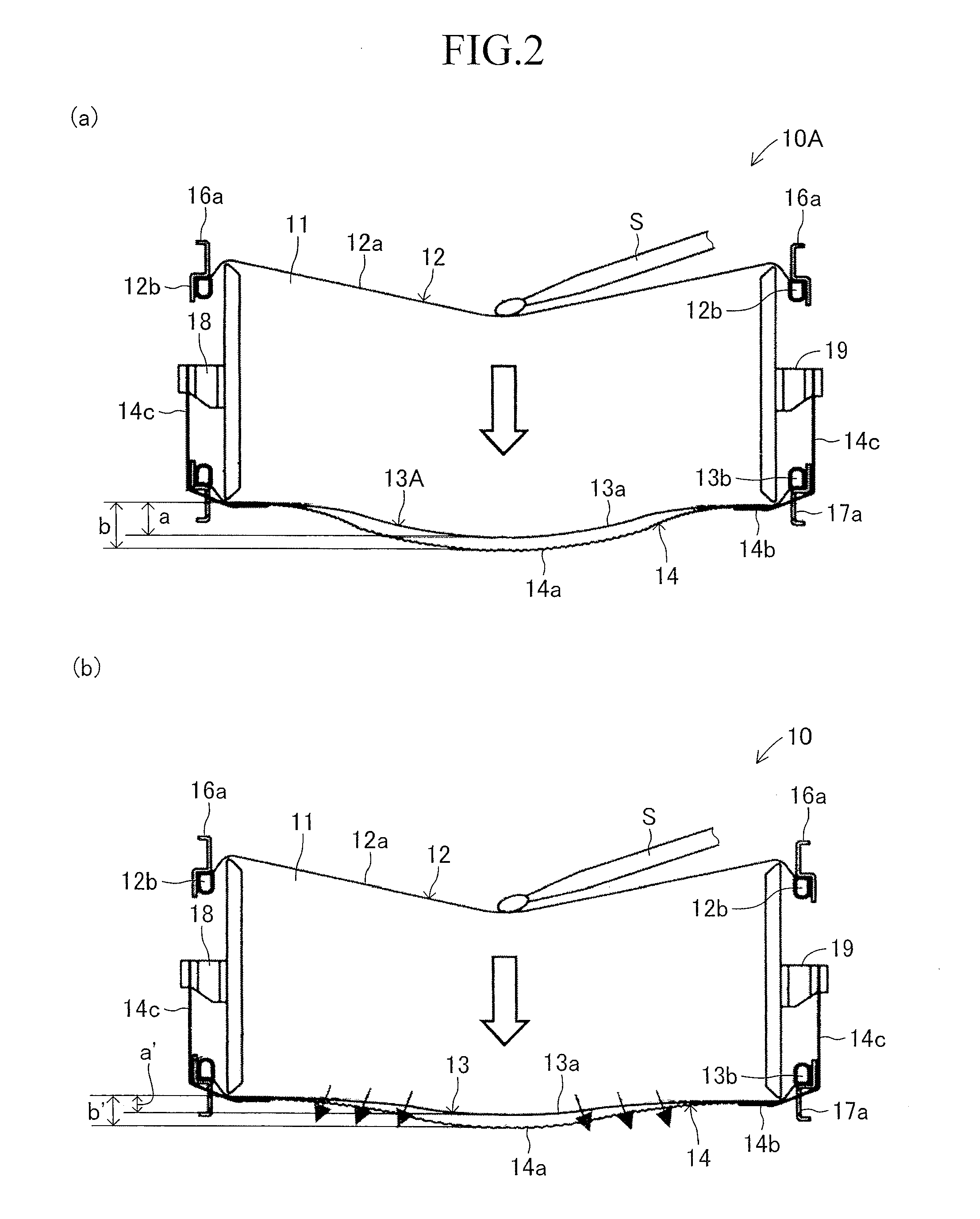Snare drum
a snare drum and side head technology, applied in the field of snare drums, can solve the problems of difficult air and sound pressure to be conveyed between the side head and the snare wire, the conventional snare drum can not generate sound, and the use of the snare drum, etc., to achieve the effect of reducing sound volume, durable area without through-holes, and reducing sound volum
- Summary
- Abstract
- Description
- Claims
- Application Information
AI Technical Summary
Benefits of technology
Problems solved by technology
Method used
Image
Examples
first embodiment
[0028]Hereafter, a snare drum according to the first embodiment of the present invention will be described with reference to the drawings. FIGS. 1 (a) to (c) show a snare drum 10 according to the embodiment. The snare drum 10 is a snare drum measuring 14 inches in diameter, and has a hollow cylindrical shell 11 which is a drum shell, a circular batter head 12 mounted on an upper opening (one end) of the shell 11, a circular snare side head 13 mounted on a lower opening (the other end) of the shell 11, and a snare wire 14 mounted on the bottom surface of the snare side head 13.
[0029]The shell 11 is made of wood (birch) and has functions of efficiently conveying internal air downward when vibrations occur and of reverberating the vibrations inside the shell 11. The batter head 12 is formed of a circular head portion 12a made of a PET (polyethylene terephthalate) film and a flesh hoop 12b which is a metal ring. The head portion 12a has a thickness of 250 μm, and has a slightly larger d...
second embodiment
[0050]FIG. 5 indicates a bottom surface of a snare drum 20 according to the second embodiment of the present invention. The snare drum 20 has circular through-holes 23c all over a snare side head 23. The through-holes 23c have the same diameter and pitch as those of the above-described through-holes 13c. Except the through-holes 23c, the snare drum 20 is configured similarly to the above-described snare drum 10. Therefore, similar components are given similar numerals to omit explanations of the components.
[0051]As for the snare drum 20, because the through-holes 23c are provided all over the snare side head 23, the durability of the snare side head 23 is reduced, but the entire surface of the snare side head 23 can be used to decrease the sound volume. In addition, the snare drum 20 eliminates necessity for the user to care about the direction of the snare side head 23 for attaching the snare side head 23 to the shell 11. Therefore, the snare drum 20 facilitates installation of the...
third embodiment
[0053]FIG. 8 indicates a bottom surface of a snare drum 30 according to the third embodiment of the present invention. The snare drum 30 has circular through-holes 33c which is provided on a snare side head 33 and whose diameter and pitch are larger than the above-described through-holes 13c but have the same through-hole rate as the through-holes 13c. In other words, the through-holes 33c have a larger diameter than the diameter of the through-holes 13c, while the number of the through-holes 33c is reduced in proportion to the enlarged diameter. Except the through-holes 33c, the snare drum 30 is configured similarly to the above-described snare drum 10. Therefore, similar components are given similar numerals to omit explanations of the components.
[0054]The snare drum 30 have the through-holes 33c having a larger diameter, which facilitates outflow of air. As a result, the amplitude of the snare drum 30 is lower than the amplitude of the above-described snare drum 10. In other word...
PUM
 Login to View More
Login to View More Abstract
Description
Claims
Application Information
 Login to View More
Login to View More - R&D
- Intellectual Property
- Life Sciences
- Materials
- Tech Scout
- Unparalleled Data Quality
- Higher Quality Content
- 60% Fewer Hallucinations
Browse by: Latest US Patents, China's latest patents, Technical Efficacy Thesaurus, Application Domain, Technology Topic, Popular Technical Reports.
© 2025 PatSnap. All rights reserved.Legal|Privacy policy|Modern Slavery Act Transparency Statement|Sitemap|About US| Contact US: help@patsnap.com



